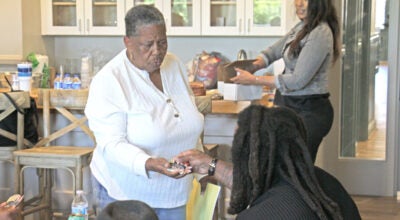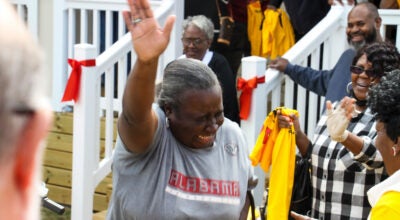A trip to the Journey School
Published 7:40 pm Saturday, October 25, 2008
Take a step inside the door of The Journey School, and it looks just like any other preschool.
Color is everywhere — on the walls, on the floor, even the furniture has hues of red, yellow and blue.
Art projects adorn the walls, all crafted by the littlest hands under the watchful eye of the school’s instructors.
But it doesn’t take long to see that this preschool is cut from a different mound of clay. It’s a preschool where children with special needs learn alongside typically developing children, with each group not only learning their ABCs and 123s, but learning lessons about how different people with different backgrounds and challenges are really not that much different at all.
“It’s amazing how the kids interact together and the children with special needs are completely accepted by the other children,” said the school’s director Penny Foster, who has a special needs child that attends the school.
Friday was a special day at the school as representatives from the Birmingham Botanical Gardens came and showed the children different kinds of pumpkins (the school’s theme for the week) and helped them plant Snapdragons.
“It’s a great hands-on activity as they use their hands to touch the pumpkins,” Foster said. “A lot of (special needs children) are sensitive to how things feel and different textures, so this is a good activity for them. It also gives them a good lesson in science; the differences between the pumpkins and the gourds.”
Amy Waters, South Central Regional Coordinator for Children’s Health System, has been working with Journey School on a variety of projects, including a fundraiser called “With These Hands,” that raised more than $35,000 to help fund the school’s operations.
“It’s not just a daycare, they’re truly trying to educate their children and help them grow,” she said. “This is a very unique school in that these could be her children the way she teaches them. I want to see the school succeed and grow, and that’s what (Children’s Health System) wants to do.”
The school opened in January, and Foster said she couldn’t be more pleased with how things are going and how the community has embraced the concept of children with different educational needs learning alongside each other.
Foster said tuition covers about 25 percent of the costs to run the school, and they depend on grants and donations from private individuals, foundations and corporations to fund the remainder of the expense. But she’s been pleasantly surprised at how supportive the community has been.
“It’s been overwhelming the support we’ve gotten from the community. Without even being asked, people have been supportive,” she said. “I think people realize how unique our program is and how cutting edge we are. We could be one of the best kept secrets in Selma, but we don’t want to be.”




